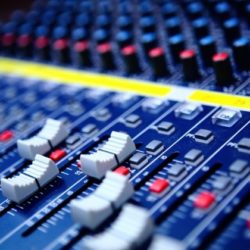Resident studio wizard Dave Pezzner runs us through his process for perfecting his mixdowns in the first of two parts.
If you are like me, you’ve probably spent countless hours scouring the Internet for information on getting the perfect balance. No doubt you’re reflecting on why when you compare the professionally mastered tunes by your favorite producers, your tracks aren’t holding up sonically. Your mixes are flat, lifeless, and most of all, quiet. Some people figure it’s because of one particular thing: Maybe it’s wrong DAW? Does Ableton really “sounds better” than FL Studio? Is Logic “louder” than Ableton? Are Sennheiser headphones “better” than Pioneer? Will a $2500 set of pro studio monitors fix the problem with your mixes? While it’s true it’s important to settle into the setup of equipment and software that you are going to be comfortable with, it’s unlikely that you are going to achieve the mix you are looking for by simply changing DAWs and buying more expensive hardware. In this article, we are going to look over some technical and stylistic considerations that can aid you in creating the balance you are looking for in your mix.
Gain Staging
Gain staging is a simple concept that every mastering engineer will agree, is a main consideration producers should take when mixing down. It’s basically this: Every stage that your audio signal passes, from its point of origin to the master channel, must not exceed “0”, or unity level, at either its inputs or its outputs. Additionally, when mixing down, the sum of all audio channels, when combined in the master channel must not peak over “0” or unity level either. Think of it this way: You plug your iPod into a minijack on your stereo and turn the iPod all the way up, the audio signal distorts even though your stereo is at low volume. This is because the gain on your iPod is not “staged” properly. The loud output of your iPod is overloading the input of your stereo, and the result is distortion.
Gain staging is important because each DAW, and each mixer, has its own way of handling an overloaded signal and the more overloaded the signal is in any channel, the more unintended distortion your mix is going to carry with it after you export the file. This is not to say that your project won’t sound fine while you are working on the song, but after you export it, you may wonder why it doesn’t sound the way you intended it, and this is one of the primary reasons why. After a signal has been digitally clipped, there is little to nothing a mastering engineer can do to correct or enhance the signal, and your song will lack the sheen you are looking for.
Space and Environment
Let’s talk about space. I feel that as an artist it’s important to give my songs a point, and put them in an environment. Take a step back and listen to your mix, listen to each sound in the mix and try to think about the context of each sound. If you were to close your eyes and imagine your track in a room, each element in that song should then have its place in that room. What is that sound doing? Where is it coming from? Is there a human playing that sound source, or is it coming from a machine? An animal? Is this sound traveling around the room? If so, why is it traveling around the room? Is it interacting with another sound source? Take a step back and think where the room is. Is it inside? Outside? In a coffee shop? A nightclub? If your music is anything more than some electronic sounds and samples, then you are telling a story to your listener, and the environment is part of that story.
Once you start to hash out the ‘environment’ of your project, it gets easier to understand what needs to be done to get these sounds to gel together. Think. If all the sounds in your song were set dead center in the stereo mix, then in theory all the figurative “players” of these sounds would be standing right on top of each other in the same spot in the room crowding the same figurative space and competing for the attention of the listener. Some sounds might seem buried under others, almost inaudible. This is why it’s important to make use of those pan knobs and reverbs. The more these elements spread out, the less they need to compete with each other using volume. Once you pan a sound over to its place in the mix and use reverb to set the distance of that sound, context and separation are introduced to the mix, and the need for volume is less important. We can then turn these elements down, and bring the overall volume of the song up a bit.
Side Chain Compression
It is said that side-chain compression was developed in the 1930s by Douglas Shearer as part of the continuing effort to eliminate the cost of audio engineers in the film industry by automatically adjusting volume levels of voice and ambient noise in audio recordings. And while the effort initially failed to remove the sound guy from the film studio, the technology eventually made its way to audio studios. By the Sixties, side chaining was used in places like department stores to reduce the music levels when announcements were being made.
Today it’s common to find compressors with side chain inserts. Inserting audio into the side chain is simply controlling the compression circuit using a signal different from the one being compressed. The inserted signal can be used to increase the volume of the compressed signal or reduce it. In all forms of dance music today the use of side chain compression is essential for moving less important elements away from the more important ones. It should be understood that side chaining allows you, the “story teller,” to give your sounds immediate and exact priority over each other in the mix.
Tomorrow: Pezzner’s Mastering The Mixdown – Part 2







Join the discussion
comments powered by Disqus